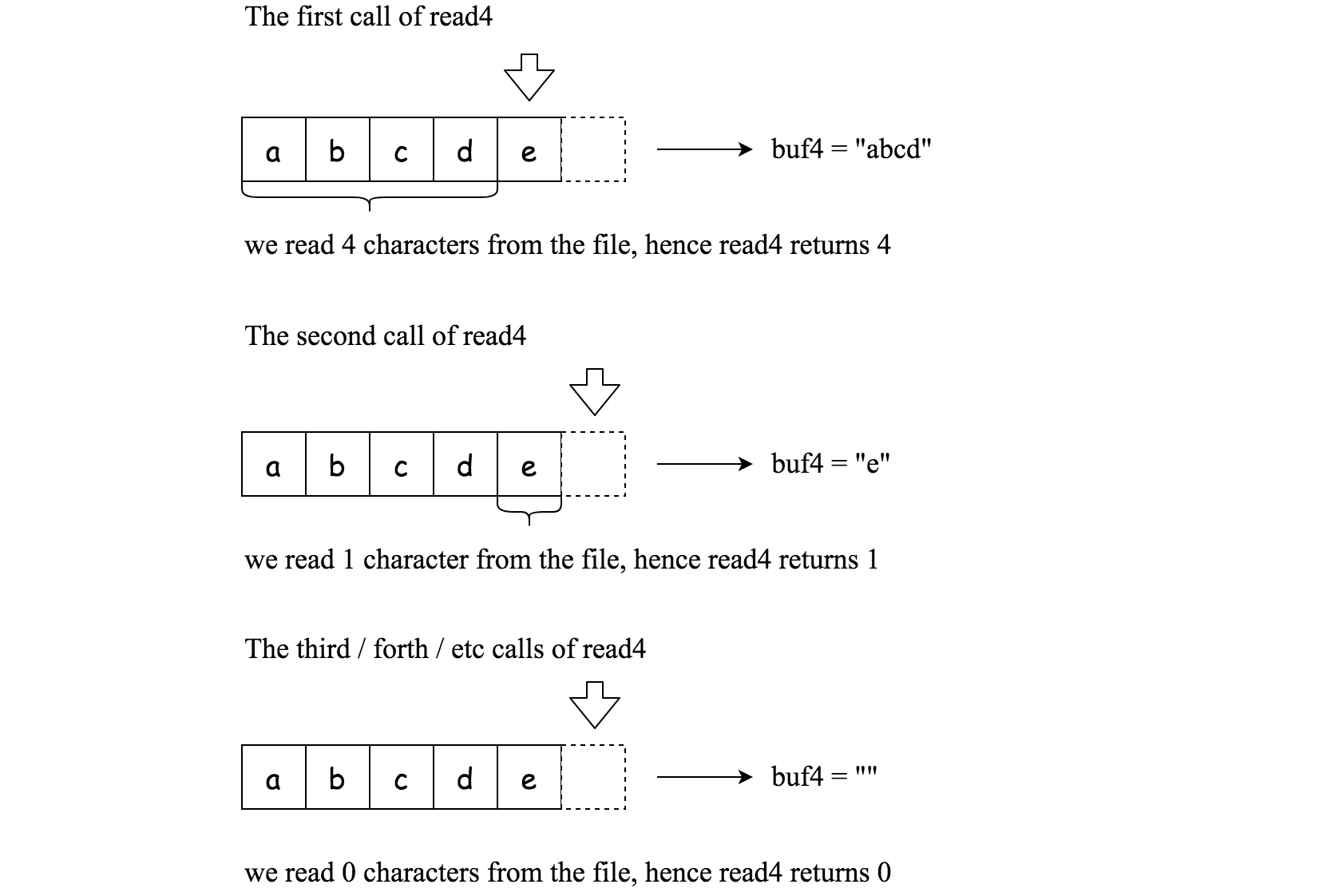158. Read N Characters Given Read4 II - Call multiple times
Description
Given a file and assume that you can only read the file using a given method read4, implement a method read to read n characters. Your method read may be called multiple times.
Method read4:
The API read4 reads 4 consecutive characters from the file, then writes those characters into the buffer array buf.
The return value is the number of actual characters read.
Note that read4() has its own file pointer, much like FILE *fp in C.
Definition of read4:
Parameter: char[] buf4
Returns: int
Note: buf4[] is destination not source, the results from read4 will be copied to buf4[]
Below is a high level example of how read4 works:

Method read:
By using the read4 method, implement the method read that reads n characters from the file and store it in the buffer array buf. Consider that you cannot manipulate the file directly.
The return value is the number of actual characters read.
Definition of read:
Parameters: char[] buf, int n
Returns: int
Note: buf[] is destination not source, you will need to write the results to buf[]
Constraints
Approach
Links
GeeksforGeeks
ProgramCreek
YouTube
Examples
Input:
"abc"
[1, 2, 1]
Output:
["a", "bc", ""]
Explanation:
File file("abc");
Solution sol;
// Assume buf is allocated and guaranteed to have enough space for storing all characters from the file.
sol.read(buf, 1); // After calling your read method, buf should contain "a". We read a total of 1 character from the file, so return 1.
sol.read(buf, 2); // Now buf should contain "bc". We read a total of 2 characters from the file, so return 2.
sol.read(buf, 1); // We have reached the end of file, no more characters can be read. So return 0.
Input:
"abc"
[4,1]
Output:
["abc", ""]
Explanation:
File file("abc");
Solution sol;
sol.read(buf, 4); // After calling your read method, buf should contain "abc". We read a total of 3 characters from the file, so return 3.
sol.read(buf, 1); // We have reached the end of file, no more characters can be read. So return 0.
Solutions
Follow up
Last updated
Was this helpful?